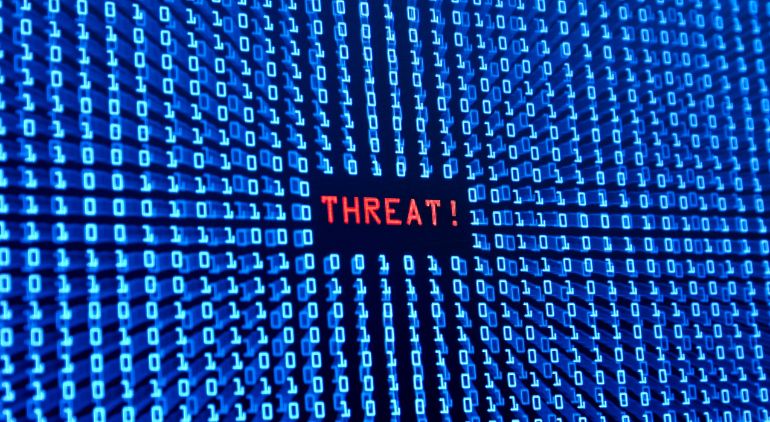405-458-5710
Confidentiality Guaranteed
405-458-5710
Confidentiality Guaranteed
You are Reading:
-
1 to 1 Risk Control & Investigations > Blog > Geo-Political > Insights from the FBI Documentary “Made in Beijing”

Jun
Insights from the FBI Documentary “Made in Beijing”
Organizational Steps to Take
The FBI documentary “Made in Beijing” highlights the sophisticated and pervasive efforts of Chinese state-sponsored actors to infiltrate and exploit American organizations for economic and strategic gains. This documentary underscores the importance of robust cybersecurity measures and strategic awareness to protect against these threats. Drawing insights from the documentary, this blog post outlines crucial steps organizations should take to safeguard their assets, data, and intellectual property.
Enhancing Cybersecurity Awareness and Training
One of the primary lessons from “Made in Beijing” is the critical role of human factors in cybersecurity. Employees at all levels must be aware of the tactics used by state-sponsored actors and the importance of adhering to security protocols.
Regular cybersecurity training sessions should be conducted to educate employees about common threats such as phishing, social engineering, and insider threats. Training should include real-world scenarios and interactive elements to engage employees and reinforce learning. By fostering a culture of security awareness, organizations can significantly reduce the risk of successful cyber attacks.
Implementing Advanced Threat Detection and Response
The documentary highlights the advanced techniques used by state-sponsored actors to infiltrate networks and remain undetected. Organizations must invest in advanced threat detection and response solutions to identify and mitigate these sophisticated threats.
Deploying tools such as Security Information and Event Management (SIEM) systems, Endpoint Detection and Response (EDR) solutions, and Intrusion Detection Systems (IDS) can provide real-time monitoring and analysis of network activity. These tools use machine learning and behavioral analysis to detect anomalies and potential threats, enabling rapid response to mitigate potential breaches.
Strengthening Access Controls and Privilege Management
Effective access controls and privilege management are essential to protect sensitive data and systems from unauthorized access. The documentary illustrates how state-sponsored actors often target privileged accounts to gain access to critical assets.
Organizations should implement the principle of least privilege, ensuring that employees have only the access necessary to perform their duties. Regular audits of access controls and permissions should be conducted to identify and revoke unnecessary privileges. Multi-factor authentication (MFA) should be enforced for all critical systems to add an additional layer of security.
Securing Supply Chain and Third-Party Relationships
State-sponsored actors often exploit vulnerabilities in the supply chain to infiltrate target organizations. Ensuring the security of third-party vendors and partners is crucial to mitigating this risk.
Organizations should conduct thorough due diligence when selecting vendors and partners, assessing their cybersecurity practices and compliance with industry standards. Regular security assessments and audits of third-party relationships should be conducted to identify and address potential vulnerabilities. Establishing clear security requirements and contractual obligations for vendors can also help ensure that they adhere to the organization’s security policies.
Protecting Intellectual Property and Trade Secrets
The theft of intellectual property and trade secrets is a significant concern highlighted in “Made in Beijing.” Organizations must implement stringent measures to protect their valuable assets from state-sponsored espionage.
Data encryption should be employed to protect sensitive information both in transit and at rest. Access to intellectual property should be restricted to authorized personnel, and robust monitoring and logging should be implemented to detect any unauthorized access or exfiltration attempts. Additionally, organizations should regularly review and update their data protection policies to ensure they align with current threats and best practices.
Enhancing Incident Response and Recovery Plans
Effective incident response and recovery plans are critical to minimizing the impact of a cyber attack. The documentary underscores the importance of being prepared to respond swiftly and effectively to a breach.
Organizations should develop comprehensive incident response plans that outline the steps to be taken in the event of a cyber incident. These plans should include clear roles and responsibilities, communication protocols, and procedures for containment, eradication, and recovery. Regular drills and tabletop exercises should be conducted to test the effectiveness of the incident response plan and identify areas for improvement.
Collaborating with Law Enforcement and Industry Partners
The documentary highlights the value of collaboration between organizations, law enforcement, and industry partners in combating state-sponsored cyber threats. Sharing threat intelligence and best practices can enhance the collective defense against these sophisticated actors.
Organizations should establish relationships with local law enforcement agencies, industry groups, and cybersecurity organizations to facilitate information sharing and collaboration. Participating in threat intelligence sharing initiatives can provide valuable insights into emerging threats and enable organizations to proactively address potential risks.
Implementing Robust Cyber Hygiene Practices
Basic cyber hygiene practices are fundamental to protecting against a wide range of cyber threats. The documentary underscores the importance of maintaining a strong security posture through routine measures.
Regular software updates and patch management should be enforced to address known vulnerabilities. Strong password policies should be implemented, requiring complex passwords and regular password changes. Network segmentation can help contain potential breaches and limit lateral movement within the network. Additionally, regular backups should be performed to ensure data can be restored in the event of a ransomware attack or data loss incident.
Fostering a Security-First Culture
Creating a security-first culture is essential for ensuring that cybersecurity is prioritized at all levels of the organization. The documentary highlights the need for executive leadership to champion cybersecurity initiatives and set the tone for the organization.
Executive leaders should demonstrate their commitment to cybersecurity by actively participating in security initiatives and communicating the importance of security to all employees. Incentives and recognition programs can be implemented to reward employees who demonstrate exemplary security practices. By embedding security into the organization’s culture, employees are more likely to take ownership of their role in protecting the organization’s assets.
Conducting Regular Security Assessments and Audits
Regular security assessments and audits are crucial for identifying and addressing potential vulnerabilities within the organization. The documentary emphasizes the need for continuous evaluation and improvement of security practices.
Organizations should conduct regular vulnerability assessments and penetration testing to identify and remediate weaknesses in their systems. Security audits should be performed to ensure compliance with industry standards and regulatory requirements. The findings from these assessments and audits should be used to inform and update the organization’s cybersecurity strategy.
Developing a Comprehensive Cybersecurity Strategy
A comprehensive cybersecurity strategy is essential for addressing the complex and evolving threats highlighted in “Made in Beijing.” This strategy should encompass all aspects of the organization’s security posture, from technical controls to employee training and incident response.
The cybersecurity strategy should be aligned with the organization’s overall business objectives and risk tolerance. It should include clear goals, objectives, and metrics for measuring success. Regular reviews and updates to the strategy are necessary to ensure it remains effective in the face of changing threats and technologies.
The FBI documentary “Made in Beijing” provides valuable insights into the sophisticated tactics used by state-sponsored actors to infiltrate and exploit organizations. By taking proactive steps to enhance cybersecurity awareness, implement advanced threat detection and response, strengthen access controls, secure the supply chain, protect intellectual property, and foster a security-first culture, organizations can better defend against these threats. Collaboration with law enforcement and industry partners, regular security assessments, and a comprehensive cybersecurity strategy are also critical components of a robust security posture. By following these steps, organizations can mitigate the risks highlighted in the documentary and protect their valuable assets from state-sponsored cyber threats.
- AI
- Bug Sweeps
- Car Security
- Cyber Crime
- Cyber-Stalking
- Digital Forensics
- Fraud
- Geo-Political
- GPS Tracking
- Hidden Cameras
- Identity Theft
- Investigations
- Misinformation
- Mobile Device Forensics
- Mobile Device Security
- Operational Security
- Privacy
- Psychology
- Situational Awareness
- Social Media Investigations
- Stalking
- Surveillance
- Uncategorized
